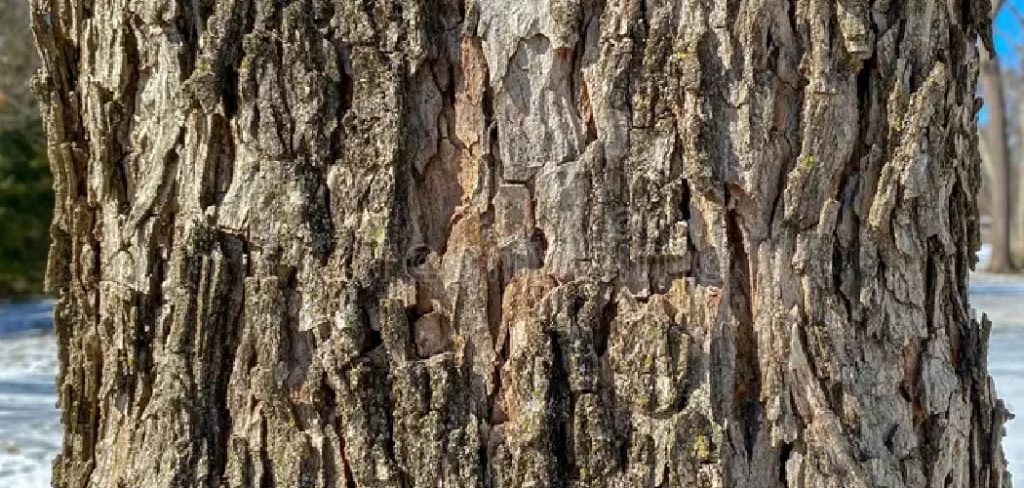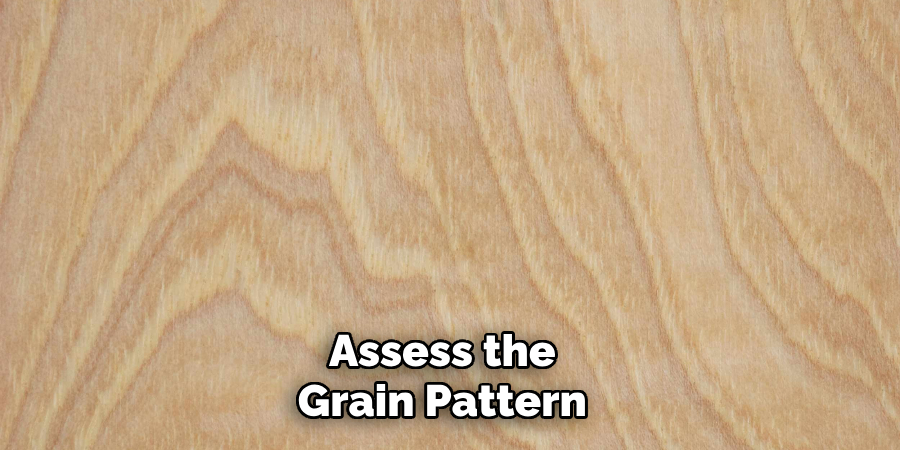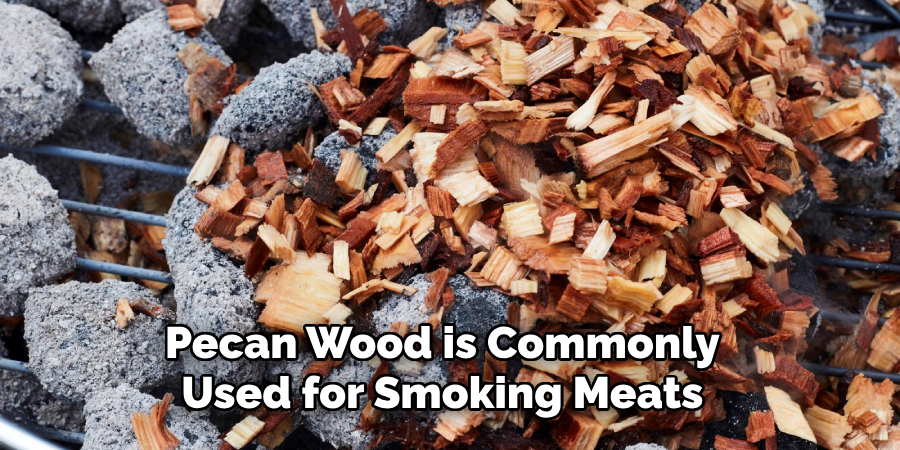Are you a woodworker or someone who wants to make their own furniture? Do you have a piece of wood that you suspect is pecan but are unsure how to confirm it? Identifying the type of wood you are working with is essential as different woods have varying characteristics and uses.
How to identify pecan wood can be a valuable skill for woodworkers, furniture makers, and DIY enthusiasts alike, as its unique characteristics can significantly enhance various projects. Known for its strength, durability, and rich grain patterns, pecan wood is often sought for structural and aesthetic purposes.

This guide will provide an overview of the essential traits to look for when distinguishing pecan from other hardwoods, including its color, grain, weight, and other distinguishing features. By familiarizing yourself with these identifying characteristics, you’ll be better equipped to select the finest pecan wood for your next undertaking.
What Will You Need?
Before we dive into identifying pecan wood, let’s first gather the necessary tools you’ll need for this task. To identify any type of wood accurately, it’s best to have a variety of tools on hand. Here are some essential items that you should have in your woodworking toolkit:
- A sharp pocket knife or chisel
- A magnifying glass or loupe
- Sandpaper or a hand plane
- An understanding of different wood characteristics and common hardwood species
It would also be helpful to have a sample piece of known pecan wood to compare with when examining an unknown piece. This will allow you to clearly see the distinguishing features and make accurate comparisons.
10 Easy Steps on How to Identify Pecan Wood
Step 1: Examine the Color
Begin by observing the wood’s color. Pecan wood typically displays a warm, golden brown hue, often with darker streaks. The sapwood is generally lighter, ranging from a pale yellowness to a whitish tint, while the heartwood is much darker. Compare the color of your unknown piece with known pecan wood to identify any significant differences.
Step 2: Assess the Grain Pattern
Next, take a close look at the grain pattern of the wood. Pecan wood is known for its distinctive and varied grain, which can be straight, wavy, or interlocked. The grain may feature a pronounced, swirling appearance with occasional knots, giving it a unique character. Use your magnifying glass or loupe to inspect the details more closely, as these subtle nuances can help differentiate pecan from other hardwoods. Pay attention to whether the grain is consistent or if there are noticeable variations, as this can provide clues about the wood’s identity.

Step 3: Check the Weight
Weight is a vital characteristic to consider when identifying pecan wood. Pecan is a dense hardwood, so the weight of your sample will typically feel heavier than that of softer woods. Compare the weight of your unknown piece to that of known pecan wood or other hardwoods to assess if there is a noticeable difference.
Step 4: Feel the Texture
To accurately identify pecan wood, it’s essential to consider its texture. Pecan wood typically has a smooth and silky feel, especially when finished properly. When you run your fingers across the surface, you should notice that it isn’t coarse or rough but instead has a subtle sheen that can be reminiscent of other fine hardwoods. This characteristic texture can help distinguish it from softer woods that might feel more fibrous.
Additionally, the presence of knots or erratic grain patterns may contribute to a unique tactile experience as you explore the wood’s surface. Be conscious of any bumps or irregularities, as they can indicate the wood’s history and help further confirm its identity as pecan. Comparing the wood texture in question with that of a known pecan sample can also provide valuable insights and clarity in your identification process.
Step 5: Smell the Wood
Another method to identify pecan wood is by using your sense of smell. When freshly cut or sanded, pecan wood emits a rich, sweet aroma that is distinctive from other hardwoods, this nutty scent can be quite inviting and is often a telltale sign of pecan. Take a moment to observe any olfactory cues as you work with the wood, as it may provide additional confirmation of your identification.
Step 6: Examine the End Grain
The end grain of the wood can provide crucial information about its species. Cut a small piece of the end of your wood sample and observe it closely. Pecan wood typically has a medium to coarse texture, and the end grain often reveals a distinctive pattern with prominent rays. Look for differences between the growth rings and the overall structure, as these features can help distinguish it from similar hardwoods.

Step 7: Evaluate Durability and Workability
Consider how the wood performs during woodworking tasks. Pecan is known for its workability; it cuts easily and holds screws and nails well. If you find that the wood is stubborn or difficult to shape, it may indicate that you are working with a different species. Additionally, pecan wood is quite durable and resistant to wear, making it ideal for furniture and flooring.
Step 8: Look for Color Change Over Time
Pecan wood can darken with age, affecting its initial appearance. If you have an older piece of wood, compare it to known pecan samples that have yet to age as much. This comparison may reveal important clues to the wood’s identity based on how its color has changed.
Step 9: Research Local Species
If you’re in an area where pecan trees are commonly found, consider the local flora. Familiarize yourself with other hardwood species in your region that may resemble pecan. Understanding the natural context in which you found the wood may help you confirm its identity through association.
Step 10: Consult Reference Materials
Finally, if you still need to figure out your wood sample, consult reference books or online resources focusing on wood identification. Visual guides, photographs, and detailed descriptions can enhance your understanding of pecan wood and aid in the identification process. Seeking advice from experienced woodworkers or joining online forums can also provide valuable insights and assistance.
By following these steps and using various methods to identify pecan wood, you can confidently determine if your unknown piece is pecan.
5 Things You Should Avoid
1. Relying Solely on Colour: Avoid making identification decisions based solely on the color of the wood. While pecan wood typically features a warm, golden brown hue, colors can vary significantly due to age, finishing, and environmental factors. It’s crucial to consider other characteristics in conjunction with color.

2. Ignoring Grain Patterns: Pay attention to the importance of grain patterns. Pecan wood is known for its distinctive and varied grain, and relying only on visual aspects can lead to misidentification. Continually assess the grain closely, as it can be a decisive factor in identifying pecan wood.
3. Not Checking Weight: Remember to consider the weight of your sample compared to known pecan or other hardwoods. A piece that feels significantly lighter or heavier may indicate a different species.
4. Neglecting Texture and Smell: Texture and smell are significant characteristics when identifying pecan wood. Be sure to complete these steps, as they can provide valuable clues and help confirm your identification.
5. Skipping Research: Avoid skipping research and relying solely on personal observations and experience. Engage with reference materials, seek advice from experts, and continue learning about wood identification to improve your skills over time.
These 5 things to avoid will help you make more accurate and confident identifications when working with pecan wood.
5 Different Use Cases for Pecan Wood
- Flooring: Pecan wood’s durability and resistance to wear make it an excellent choice for flooring. Its warm tone and distinctive grain pattern can add a touch of elegance and character to any room.
- Furniture: Pecan wood is versatile and easy to work with, making it popular among furniture makers. Its strength and stability lend itself well to creating durable pieces such as tables, chairs, and cabinets.
- Cutting Boards: The hardness of pecan wood makes it an ideal material for cutting boards. Its natural oils also provide protection against bacteria growth, making it a safe and hygienic option for food preparation.
- Musical Instruments: Pecan wood is often used to make stringed instruments, such as guitars and violins. The wood’s resonance and tonal qualities enhance the instrument’s sound quality.
- Smoking Wood: Pecan wood is commonly used for smoking meats, especially in Southern cuisine. Its mild but distinct flavor adds a unique taste to grilled or smoked dishes. Some even consider pecan wood a more flavourful alternative to traditional hickory or mesquite woods.

These are just a few of the many uses of pecan wood, which showcase its versatility and usefulness in various industries.
Conclusion
How to identify pecan wood can be a rewarding process when approached with careful consideration of its distinct characteristics.
You can understand whether your wood sample is pecan by examining attributes such as grain patterns, color, texture, weight, and durability. Additionally, researching local species and consulting reference materials can further enhance your confidence in identification. By avoiding common pitfalls, such as relying solely on color or neglecting to consider smell and texture, you can refine your skills in wood identification.
Through observation and education, you can distinguish pecan wood from other hardwoods and appreciate its unique qualities in your woodworking projects.
About the Author
Adrian Green, a lifelong woodworking enthusiast, shares his passion for the craft through The Woodenify Blog. With a foundation built on years of hands-on experience in his father’s woodworking shop, Adrian is dedicated to helping others learn and grow in the world of DIY woodworking. His approach to woodworking combines creativity, practicality, and a deep appreciation for the art of building with your own hands. Through his blog, he inspires individuals of all skill levels to embark on their own woodworking journeys, creating beautiful, functional pieces of furniture and décor.
Professional Focus
- Specializes in DIY woodworking projects, from furniture to home décor.
- Provides step-by-step guides and practical tutorials for woodworkers of all skill levels.
- Dedicated to helping readers build confidence and skill through easy-to-follow instructions and tips.
- Passionate about fostering a community of makers who can share, learn, and grow together.
Education History
- University of Craft and Design – Bachelor of Fine Arts (BFA) in Woodworking and Furniture Design
- Woodworking Apprenticeships – Extensive hands-on training with skilled craftsmen to refine carpentry and furniture making techniques.
- Online Courses & Masterclasses – Continued education in advanced woodworking techniques, design principles, and specialized tools
Expertise:
- DIY woodworking, carpentry, furniture making, and home décor projects.
- Creating accessible tutorials and guides for beginner to advanced woodworkers.
- Sharing the joys and satisfaction of woodworking, from raw materials to finished products.
